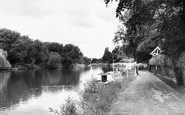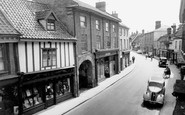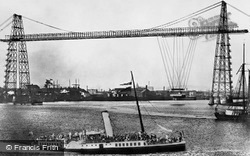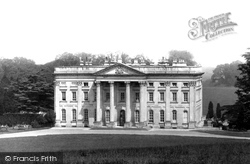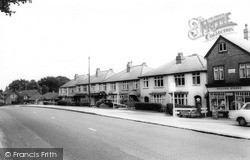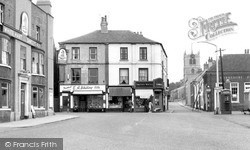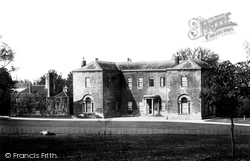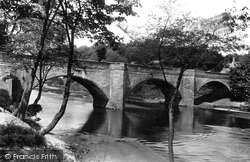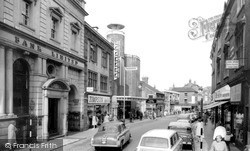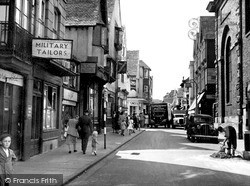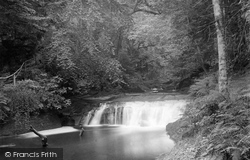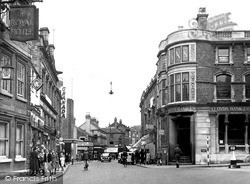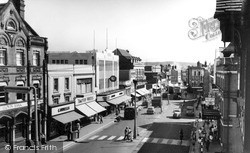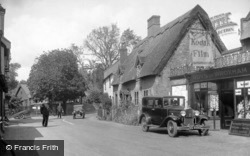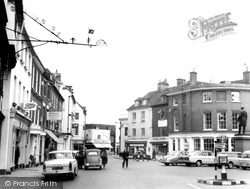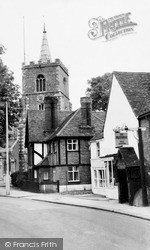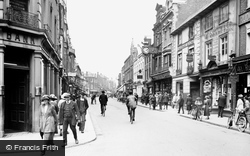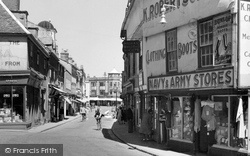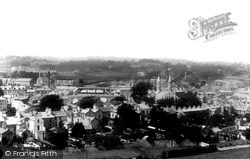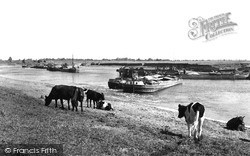Places
3 places found.
Those places high-lighted have photos. All locations may have maps, books and memories.
Photos
68 photos found. Showing results 301 to 68.
Maps
12 maps found.
Books
15 books found. Showing results 361 to 15.
Memories
7,562 memories found. Showing results 151 to 160.
My Schooldays 1952 54 Near Skipton
My Grandparents lived at 26 Otley Street in Skipton from the 1940 ( or earlier ) and I had first visited them in 1945 after VE day, They were Thomas Henry Jackson, my Grandmother Charlotte Jackson and their ...Read more
A memory of Skipton in 1952 by
Burntoakboy
As a boy growing up in Burnt Oak I remember the barrow boys in Watling Avenue, the hustle and bussle of everyday trading, the people gathering round the stalls, the banter, the laughter, the friendliness. Like one family everyone ...Read more
A memory of Burnt Oak in 1954 by
Picking Wild Violets
My friend Jean and I used to pick wild violets in the wood just along the towpath on the right hand side of this picture. The wood was a carpet of yellow celandines in Spring and the scent from the wild violets was reward in ...Read more
A memory of Dorney in 1958 by
Growing Up In Abridge Roger Walker
We moved to Abridge in 1948, I was 8 years old, with mum and dad Pat and Stan Walker. We lived at no 41 Pancroft Estate later re numbered 45. My early memories of the little villiage was of Brighty's shop and ...Read more
A memory of Abridge in 1948 by
1972
Married at the wonderful old church of St. Peter's Walton on the Hill, 5th July 1972. At this time, my parents were living at Tudor Court, Walton St. Walton on the Hill, and Mum, owned the shop below, Anne Cleeves. I had been over ...Read more
A memory of Walton on the Hill in 1972 by
My Childhood Years In Stebbing
My Grandparents, Harry and Hannah Young lived in the first cottage on the left as you enter the village. I spent most of my school holidays there with them and my Mother and I were evacuated to live with them during ...Read more
A memory of Stebbing in 1940 by
My Mum's Hairdressing Salon
Right on the end of this barn, hidden from view was a small irregular building with it's own door. It had been a small butchers shop some time before my Mum and Dad bought it as a hairdressing salon for my mum ...Read more
A memory of Bolton-by-Bowland in 1977 by
Holidays
My brother and I had holidays in the chalets on the top of the cliffs along with my parents and maternal grandmother. It always seemed hot and sunny and the whole two weeks was spent climbing along the cliffs, digging in the sand and ...Read more
A memory of Scratby in 1960 by
Station Road Meopham
My parents moved into Station Rd in 1963, as a newly married couple. There was a terrace of new houses built in Station Rd in 1962/63 & theirs was the furthest house down the road, the end of the terrace, I think No.28? I ...Read more
A memory of Meopham in 1963 by
A Long Time Ago
In memory land way back in the mists of time, two small boys left these shores and sailed away across the seas to New Zealand, the land of the All Blacks rugby team. They left behind many fond memories and have never really ...Read more
A memory of Halesworth in 1947
Captions
2,501 captions found. Showing results 361 to 384.
In the distance, on the right, is Bank Parade house, once the home of Sir James Mackenzie (1853-1925).
Newport's most famous landmark, the transporter bridge (or aerial ferry), was opened in 1906.
Moor Park was built in the 1720s for the banker and South Sea Bubble profiteer Benjamin Styles.
Lickey village is an unremarkable sort of place, but the name is famous among railway buffs because the two-mile Lickey Incline (between Bromsgrove and Barnt Green) is, almost incredibly, the
Ascend the clock tower of St Nicholas's parish church and see six of the county's major rivers - the Humber, the Don, the Went, the Ouse, the Trent and the Aire.
The Priory stands on the banks of the River Hiz (from which the town of Hitchin gets its name), and dates back to the time of King Edward II.
This sturdy bridge over the River Wharfe, linking Boston Spa with Thorp Arch, was built in 1770. Along the banks to the east is the old Spa Baths, now converted to housing.
The Midland Bank is prominent on the left, facing the National Westminster and Barclays, which was a few steps from Lloyds' palatial building opposite the Royal Hotel.
In the 19th century, banks often built very imposing buildings to reflect their status in everyday life.
The Midland Bank is prominent on the left, facing the National Westminster and Barclays, which was a few steps from Lloyds' palatial building opposite the Royal Hotel.
About ten miles north-east of Penrith, near Staffield, pathways have been cut along the banks of the Croglin Beck where it tumbles down through the sandstone gorge it has carved on its way
Lloyds Bank had succeeded the Northamptonshire Banking Company, which had opened in 1876 in temporary offices in the Market Place. In 1890 they joined forces with the Capital and Counties Bank.
Cawdells' department store is executing a pincer movement on Timothy Whites, the chemist (left).
Martin`s Bank (centre left), on the left of Yorkshire Street, has lost its turret and other roof top features during modernisation and the Midland Bank has been cleaned.
This charming village straddles the banks of the River Bure amidst beautiful marshland.
To the right at 27 Market Place is the post office. In July 1965 this was transformed into the Westminster Bank, where Mr Gambrill was the manager - he had been with the bank for 31 years.
Only the tower survives of the original church. The building was rebuilt and restored on a number of occasions, first in 1630 and later in 1870 to a plan by Blomfield.
We now northwards into the High Street. The bank on the left has its long frontage to St Paul's Square, and is now a Ladbroke's betting shop.
The Bank Street/Great Square corner was rebuilt in the 1930s with a building capped by a stylish cupola (centre, at the end of the street).
By the river, a road leads off Walton Lane under the bridge towards Walton Marina.
The Bank Street/Great Square corner was rebuilt in the 1930s with a building capped by a stylish cupola (centre, at the end of the street).
This general view of the river near Potter Heigham bridge clearly illustrates the flat and treeless banks of the river.
This is a general view of Kendal from the south, with the Lakeland hills in the background.
From Southwell the tour heads north-east back to the River Trent north of Newark and on to Sutton-on-Trent.
Places (3)
Photos (68)
Memories (7562)
Books (15)
Maps (12)

